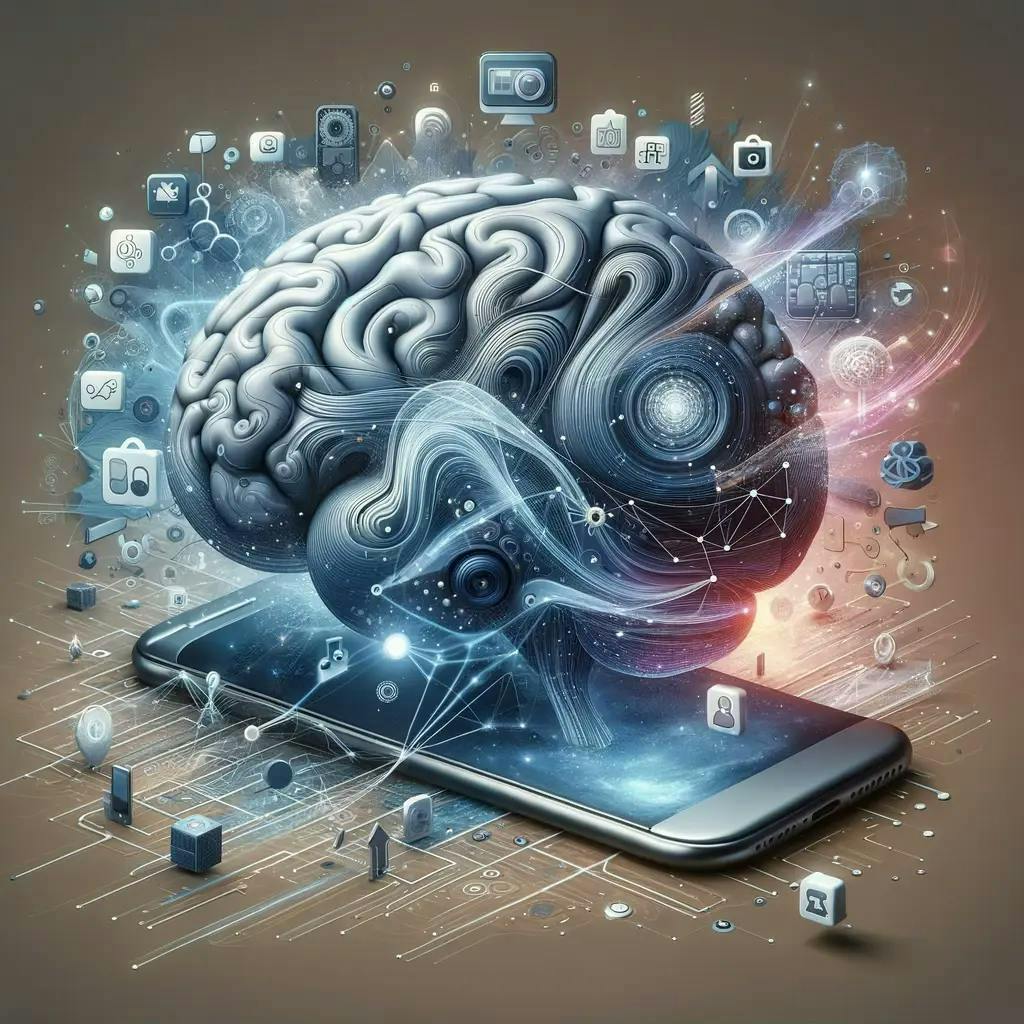Getting Schooled by Artificial Intelligence: How to use AI to improve classroom learning
Artificial intelligence is everywhere
At Georgia Tech University, Professor Ashok Goel brought on a Teaching Assistant (TA) named Jill Watson to handle the large number of forum posts1 in his computer science course. The students liked her so much that they recommended her for a teaching award.2 But Jill wasn’t actually a human: she was completely fabricated via Artificial Intelligence (AI) - the students had no idea until Dr. Goel’s reveal at the end of the semester.
Why is AI used in education?
Educational AI currently manifests as online humanoid chatbots, working either independently or in conjunction with instructors. These chatbots, like Jill Watson, will become more popular over time.3
In the United States and abroad, teachers are often underpaid and overworked, and their capacity for productivity is hindered by their high load of responsibilities.2 But AI can help: in one study, researchers found that with AI, instructors were able to perform administrative functions more accurately and effectively - and it improved students’ quality of learning.3
Algorithmic systems are growing in education through use of microblogging sites, academic social media platforms, and mobile applications. Instructors from kindergarten through high school are increasingly using scholarly social media sites,4 which places the teaching responsibilities onto intelligent algorithmic systems.5
The benefits of AI in the classroom
The use of AI in educational settings provides 3 key benefits for teachers and students. AI can:
- Support a mixed-abilities classroom6,7
- Reduce the pressure placed on teachers and gives them more time to support students6,7
- Create a more personalized learning experience for students8
Behavioral Science, Democratized
We make 35,000 decisions each day, often in environments that aren’t conducive to making sound choices.
At TDL, we work with organizations in the public and private sectors—from new startups, to governments, to established players like the Gates Foundation—to debias decision-making and create better outcomes for everyone.
Tangible opportunities for AI development
Even though educational AI is already helping teachers and students, it is not yet completely reliable in addressing teachers’ needs, addressing students’ desire for personalization, or assisting a mixed-abilities classroom. There’s a critical lack of research that incorporates both educational theory and AI technology;9 as such, there is significant potential for innovation in the educational AI sphere.
AI developers must recognize that teaching has historically not been a technology-centric field.10 Even today, a staggering number of students drop out of Massive Online Open Classes (or MOOCs): the drop-out rate was as high as 97% in a class at Duke and 90% in a class at Stanford.11
For AI to be successful in education, developers must place an emphasis on both educational theory and behavioral science.
The number of MOOCs available to learners has grown significantly in the last 10 years, from nearly zero in 2012 to about 16,000 in 2021.
How can engaged and personalized AI help students?
Self-determination theory (SDT)
Self-determination theory states we require 3 basic psychological needs for our well-being and growth:
- A sense of control
- A sense of competency
- A sense of inclusion or affiliation with others12
The absence of these characteristics may contribute to low engagement levels and high drop-out rates in online education. Alarmingly, one study found that if the support available to students in online classes isn’t focused on addressing their needs, then it will instead contribute to negative outcomes like:
- Fewer hours per week spent studying
- Fewer times accessing the learning portal
- Lower expected grade and final grade
- Less perceived learning
- Poorer course satisfaction12
However, AI can create communicative, personalized teacher’s assistants (TAs) to address each of the three components of self-determination theory.
AI can boost self-efficacy
Online classes with an unengaged instructor can hinder students' self-efficacy - the belief that they'll find success in their efforts.13 An absence of traditional educational classroom scenarios can make students feel uncertain about their capabilities. In order to rectify this, instructors need to expend energy supporting the relationship between their presence and self-efficacy efforts.14
Instructors, especially those who teach online, are often overworked or under too much pressure to cater to the needs of every student. An AI-based teaching instructor could recognize the learning needs of each student and provide them with the personalized attention needed in order to gain confidence and understand the material.
AI can improve communication
Another factor in MOOCs low retention rates is that students find it difficult to communicate with their instructors. In fact, 68% of students preferred in-class instruction for the ease of communication.15
AI-based TAs have the capacity to learn our ways of communicating and respond in a conversational manner.16 While the communication might not pass the Turing test, it can ensure that students get either quick answers to straightforward questions or are swiftly directed to the professor if the TA is unable to answer the question.
Behaviorally-informed AI unlocks potential for student success
AI developers have significant opportunities to improve the lives of both educators and their students. When capitalizing upon students’ needs for self-efficacy, educational institutions can observe higher completion rates and higher satisfaction among scholars.
Educational firms can use AI in the form of chatbots: they can answer questions from students and grow more intelligent when used within a specific field. They can also use AI to create customized lessons created for learners, which will help increase engagement and completion rates.17
A customized lesson plan might look like students taking check-in tests throughout the duration of the course. Those who do well on the tests might be challenged to complete more difficult content, while those who do poorly might be provided with supplemental lessons to improve on what they got wrong.
Employing personalization tools that allow for cultural sensitivity, regional, or other differentiators means students will gain more from the class.
AI TAs: a smart business model
In light of the pandemic and remote learning, the potential for AI in the education space is nearly limitless. In order to best help students and teachers, we must keep behavioral science and educational theories in mind by using AI as a tool to build connection and communication.
AI can constantly learn and improve: it makes sense to invest time and money in order to create better opportunities for learners. If more students finish their courses and express satisfaction with their experiences, an educational institution can prove itself as an outlier rather than the norm.
The Decision Lab is a research consultancy that uses behavioral science to advance social good. We work with some of the largest educational organizations in the world to tackle learning barriers and democratize access to education. We’re advised by some of the most innovative minds in education and development. If you'd like to tackle this together, contact us.
References
- Meet Jill Watson: Georgia Tech’s first AI teaching assistant. (2016, November 10). Georgia Tech Professional Education. https://pe.gatech.edu/blog/meet-jill-watson-georgia-techs-first-ai-teaching-assistant
- Chace, C. (2020, October 29). The Impact of Artificial Intelligence on Education. Forbes. https://www.forbes.com/sites/calumchace/2020/10/29/the-impact-of-artificial-intelligence-on-education/
- Chen, L., Chen, P., & Lin, Z. (2020). Artificial Intelligence in Education: A Review. IEEE Access, 8, 75264–75278. https://doi.org/10.1109/ACCESS.2020.2988510
- Greenhow, C., Galvin, S. M., Brandon, D. L., & Askari, E. (2020). A Decade of Research on K–12 Teaching and Teacher Learning with Social Media: Insights on the State of the Field. Teachers College Record, 122(6), 1–72. https://doi.org/10.1177/016146812012200602
- Cheney-Lippold, J. (2017). We Are Data: Algorithms and the Making of Our Digital Selves. In We Are Data. New York University Press. https://doi.org/10.18574/9781479888702
- Hrastinski, S., Olofsson, A. D., Arkenback, C., Ekström, S., Ericsson, E., Fransson, G., Jaldemark, J., Ryberg, T., Öberg, L.-M., Fuentes, A., Gustafsson, U., Humble, N., Mozelius, P., Sundgren, M., & Utterberg, M. (2019). Critical Imaginaries and Reflections on Artificial Intelligence and Robots in Postdigital K-12 Education. Postdigital Science and Education, 1(2), 427–445. https://doi.org/10.1007/s42438-019-00046-x
- Roll, I., & Wylie, R. (2016). Evolution and Revolution in Artificial Intelligence in Education. International Journal of Artificial Intelligence in Education, 26(2), 582–599. https://doi.org/10.1007/s40593-016-0110-3
- Hubert, K. (2021, March 30). The Benefits of AI in Education. Capacity. https://capacity.com/the-benefits-of-ai-in-education/
- Chen, X., Xie, H., Zou, D., & Hwang, G.-J. (2020). Application and theory gaps during the rise of Artificial Intelligence in Education. Computers and Education: Artificial Intelligence, 1, 100002. https://doi.org/10.1016/j.caeai.2020.100002
- Fahimirad, M., & Shakib Kotamjani, S. (2018). A Review on Application of Artificial Intelligence in Teaching and Learning in Educational Contexts. International Journal of Learning and Development, 8. https://doi.org/10.5296/ijld.v8i4.14057
- Peterson, R. (2013, November 12). Why Do Students Drop Out of MOOCs? By Rachelle Peterson | NAS. https://www.nas.org/blogs/article/why_do_students_drop_out_of_moocs
- Chen, K.-C., & Jang, S.-J. (2010). Motivation in online learning: Testing a model of self-determination theory. Computers in Human Behavior, 26(4), 741–752. https://doi.org/10.1016/j.chb.2010.01.011
- What Is Self-Efficacy? (2022, April 28). WebMD. https://www.webmd.com/balance/what-is-self-efficacy
- Garrison, D. R., Anderson, T., & Archer, W. (1999). Critical Inquiry in a Text-Based Environment: Computer Conferencing in Higher Education. The Internet and Higher Education, 2(2), 87–105. https://doi.org/10.1016/S1096-7516(00)00016-6
- Jensen, S. A. (2011). In-Class Versus Online Video Lectures: Similar Learning Outcomes, but a Preference for In-Class. Teaching of Psychology, 38(4), 298–302. https://doi.org/10.1177/0098628311421336
- Ivanov, B. (2020, November 30). The Role of Artificial Intelligence in E-learning. Medium. https://becominghuman.ai/the-role-of-artificial-intelligence-in-e-learning-41ac88ee3e8d
- How Is AI Being Used in E-Learning in 2020? (2020, July 24). LearnDash.https://www.learndash.com/how-is-ai-being-used-in-e-learning-in-2020/
About the Authors
Lindsey Turk
Lindsey Turk is a Summer Content Associate at The Decision Lab. She holds a Master of Professional Studies in Applied Economics and Management from Cornell University and a Bachelor of Arts in Psychology from Boston University. Over the last few years, she’s gained experience in customer service, consulting, research, and communications in various industries. Before The Decision Lab, Lindsey served as a consultant to the US Department of State, working with its international HIV initiative, PEPFAR. Through Cornell, she also worked with a health food company in Kenya to improve access to clean foods and cites this opportunity as what cemented her interest in using behavioral science for good.
Dan Pilat
Dan is a Co-Founder and Managing Director at The Decision Lab. He is a bestselling author of Intention - a book he wrote with Wiley on the mindful application of behavioral science in organizations. Dan has a background in organizational decision making, with a BComm in Decision & Information Systems from McGill University. He has worked on enterprise-level behavioral architecture at TD Securities and BMO Capital Markets, where he advised management on the implementation of systems processing billions of dollars per week. Driven by an appetite for the latest in technology, Dan created a course on business intelligence and lectured at McGill University, and has applied behavioral science to topics such as augmented and virtual reality.






